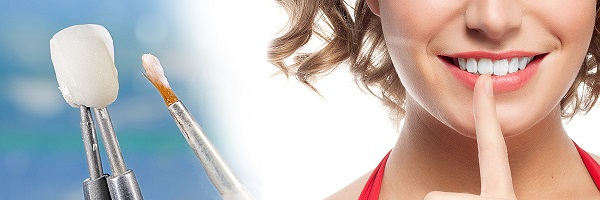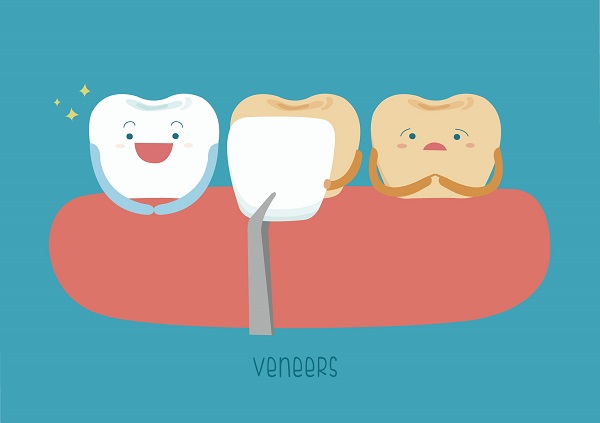Porcelain dental veneers are thin ceramics that help put a great smile on your face. Some people think that this process is exclusive to celebrities and rich people, but that’s far from the truth. Veneers have been extremely popular among everyone who truly desires an attractive smile. This technique has been used for centuries by furniture makers (putting thin pieces of attractive wood bonded to a base), basically, the same technique is applied to the teeth, just with ceramic instead of wood.

Porcelain dental veneers can fix multiple issues and are beneficial to your overall oral health. One of the most common reasons they are applied is restoration of teeth colour. Not everyone has white teeth, and even though most people try to floss and wash their teeth on regular basis, it’s sometimes just not possible to have shiny white teeth. Bleaching does not always produce the wanted results, thus veneers are the best alternative.
Furthermore, veneers can alter the size of the teeth. Gaps between teeth can be eliminated with veneers, and small and oddly shaped teeth can be altered into the desired shape and size. They can also cover cracks and minor chips in natural teeth. Sometimes, they can even be an alternative to traditional braces, straightening your teeth in about a week or two.
The process begins with a dental examination, then an aesthetic evaluation is performed in order to determine the patient’s requirements for the design of his smile. The patient should thoroughly explain what he’s expecting from the procedure, and what he wants to change in his current situation. The dentist, on the other hand, needs to propose solutions that will satisfy the patient’s needs.
After a mutual agreement, the next step is deciding the type of veneer. There are two basic types – minimal prep and traditional. The minimal-prep veneers require the dentist to remove a small amount of the patient’s tooth enamel, in most cases, none at all. Traditional veneers, however, require the dentist to remove up to 0.5 mm of tooth enamel from the patient. 0.5 mm enamel is what people lose from normal activities like consuming beverages, eating or bad brushing.

The dentist will evaluate the aesthetic appearance with the help of photography and video and will hand sculpt the tooth in order for it to do its dental functions and enhance the facial beauty. The dentist will make molds and send them to a dental laboratory where the veneers will be created. The veneers will then be attached to the patient’s mouth and proper adjustments will be made. Once the dentist and patient are satisfied with the result, the procedure continues with bonding.
The tooth may need to be etched in order to have it’s surface roughened which will improve the bonding. And finally, a special light-sensitive cement is placed on the veneer and the tooth in the correct position, and using a special light beam the cement will be hardened.















